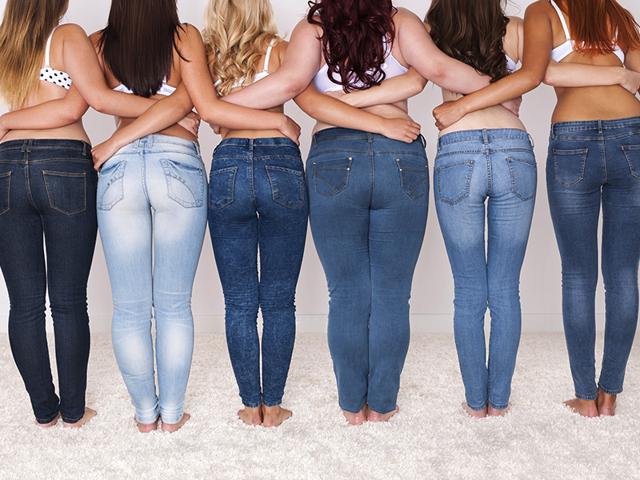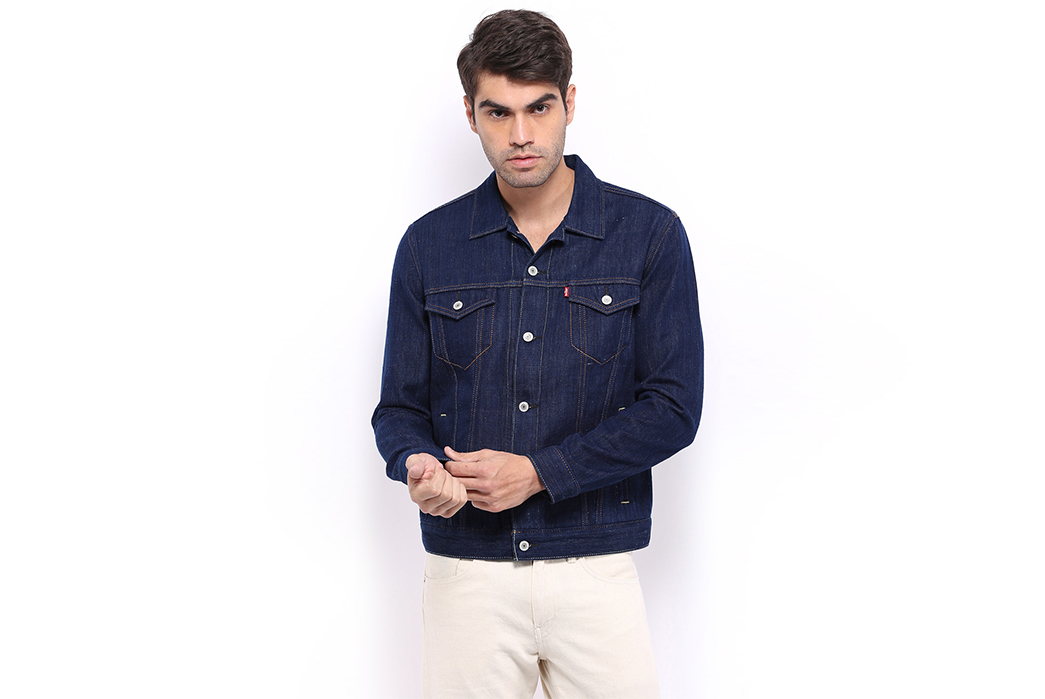Home
Denim may be a robust, sturdy cloth made in an exceedingly weave with indigo and white yarns. The blue/indigo yarns area unit the lengthwise or “warp” threads (parallel to the selvage). The white yarns see the material breadth (the yarn threads). Denim is historically woven with 100%-cotton yarn; however, nowadays it’s blended with polyester, to control shrinkage and wrinkles, and Lycra to feature stretch.Today, denim has several faces. It is often written, striped, brushed, soft and stonewashed, and therefore the indigo.
Denim Fabric Construction

Denim is created from rugged tightly plain-woven twill within which the filling passes beneath 2 or a lot of warp threads. Lengthwise, the yard is colored with indigo or blue dye; horizontal yarns stay white. The yarns have an awfully robust twist to form them a lot of sturdy, however, this conjointly affects the denim’s color. The yarns area unit twisted therefore tightly that indigo dye sometimes colors solely the surface, exploit the yarns center white. The blue strands become the threads that show on the surface of your denim and therefore the white area unit those that create the within of your denim look white. This produces the acquainted diagonal ribbing identifiable on the reverse of the material. Through wear, the indigo yarn surface provides an approach, exposing the white yarn to that causes denim to fade. Jean’s area unit basic five-pocket pants, or trousers made of denim.
Denim is Associate in Nursing indigo-dyed cotton twill cloth within which the filling passes beneath 2 or a lot of warp fibers. The term derives from ‘Serge Delaware Nimes’, the French town wherever it had been produced; however denim and cloth Delaware Nimes ar if truth be told completely different materials.
Two words come back from the name of a durable material referred to as fabric, originally created in Nimes, France. Originally referred to as fabric Diamond State Nimes (fabric of Nimes), the name was before long shortened to denim (de Nimes). Denim was historically colored blue with natural indigo dye to form blue Jeans, tho’ “Jean” then denoted a unique, lighter cotton textile, the modern use of jean comes from the French word for the metropolis, Italy, wherever the primary denim trousers wherever created. Jeans transcend age, economic and elegance barriers. however, jeans themselves have reached picture standing.
Type of Denims Natural Fabric

A type of ring-ring denim naturally uneven in warp and filling.
Munich Denim
Often found in reproduction jeans, offers the most effective mixture of the strength of polyester core and vintage aesthetic of cotton high thread layer.
Ringspun yarns were historically employed in denim up till the late Nineteen-Seventies, however wherever later supplanted by cheaper Open finish yarns. this can be spinning method within which the individual fibers are fed onto the top of the yarn whereas it’s within the “twisting” stage. the method consists of a hoop, a hoop someone and a reel that rotates at high speed. The ring-spun yarn created by this technique creates distinctive surface characteristics within the material, together with unevenness, which supplies jeans associate irregular authentic vintage look. Ring-spun yarns add strength, softness, and character to denim material.
Ring-Ring Denim
Ring/Ring or double ring-spun denim uses the ring-spun yarn for each warp and filling. this can be the standard thanks to turning out denim. It’s doable to mix a ring-spun warp material with associate Open finish filling, to urge a lot off of the strength and appearance of the standard ring/ring denim at a lower price.
Ring Denim
A traditional variety of denim material, revived within the late ’80s and early ’90-s, victimization ring-spun yarn for the warp. characterized by a softer hand associated an uneven surface look.
Bull Denim
A heavyweight denim weave (14oz. plus) with a typical 3×1 twill construction. the associate beige material, bull denim is later written or garment bleached.
Dual Ring-Spun
also known as “ring X ring”. Signifies a denim weave within which each the warp and filling threads are manufactured from ring-spun yarn. It creates a way softer and rough-textured hand than each open-end and regular (single) ring-spun denim. owing to higher production prices it’s typically solely employed by the higher finish, premium denim labels.
Black-Black denim
Denim wherever the warp yarn is black rather than blue and that is additionally bleached black once weaving. This makes the jeans actually black instead of grey.
Open finish Denim
Open finish or OE Spinning was introduced within the Nineteen Seventies, reducing the price by omitting many parts of the standard spinning method. The cotton fibers are ‘mock twisted’ by processing them along. Open finish denim is bulkier, coarser and darker, as a result of it absorbs a lot of dye, and wears less well than Ring Spun denim.
Over Twisted Denim
made from yarn that’s over twisted, giving the material a specific wavelike surface.
Printed Denim
that has been written with a pattern-a batik, stripe or floral, for example-often in contrastive colors and geared toward the terribly young market.
Reverse Denim
A novelty use of denim-turned within intent on provide jeans a very completely different look.
Pinto Wash Denim

A product of Cone Mills, USA; aforementioned to be the primary bleached denim. In 1969, in the metropolis, North geographic region, a cyclone flooded native Cone Mills plants and warehouses. voluminous yards of denim were soaked with water and had to be dried straightaway to avoid mildewing. It appeared a catastrophe, however a Cone Mills businessperson within the big apple workplace came up with an associate idea: run the material on an irregular basis through an answer to get rid of the dye and provides the denim a pale and patterned look. Designers, makers and young customers all jumped on the new product, creating horse Wash Denim a rapid success.
Denim laundry
Dramatic changes have occurred within the performance and style of jean clothes since the primary pairs of jeans were created for gold miners throughout the Golden State Gold Rush.The evolution of the jeans’ market LED to the event of some distinctive and inventive strategies for the process of denim clothes.Originally, jeans were marketed and oversubscribed as workwear with primary stress on their sturdiness and utility.But once jeans were discovered and appreciated by customers as general casual wear, they became trendy, and new techniques were developed to reinforce denim clothes and create them a lot of distinctive.These techniques embody garment laundry, stone laundry, stone laundry with element, ice laundry, and cellulase accelerator laundry.Basically, all of those techniques involve the process of clothes in rotary drum machines.
The 1st generation of indigo jeans was stiff and uncomfortable once first purchased, owing to the finishing techniques used for denim materials.Normally once weaving, greige denim is signed, finished with starch and a lubricator, so automatically shrunken.This mechanical shrinking did “break” the hand somewhat, however, no different process techniques were used to supply a soft handle.Usually, customers would take a newly purchased combine of jeans home and soften them by laundry once or many times before the primary sporting.Denim material continues to be processed victimization constant basic finishing system, however, once being cut and sewed, denim clothes could endure the further process.
The second generation of the jeans’ market evolution created pre-washed jeans by the manufacturer.These jeans had a rather pale look and a softer hand that felt comfy as if they’d been laundered many times.This trend became trendy yet, and customers were willing to pay the additional price concerned for this extra process.Consumers did not have to trouble “breaking-in” their jeans themselves with the additional advantage that the jeans were already shrunken to size with very little or no residual shrinkage.
Not long once the introduction of pre-washed jeans, the concept of victimization abrasive stones to accelerate the aging method was developed and “stone washing” was born, making a good a lot of “broken-in” look.Next, element bleach was incorporated in these wash techniques and a full new paler blue denim family evolved.Then, ice laundry was developed, within which the porous stones are soaked in a blanching agent so tumbled with dry or slightly damp clothes.This method has been given several names, together with an acid wash, snow wash, whitewash, frosted, etc.Actually, the term “acid wash” may be a name since acids alone ought to ne’er be used for this method.
Most recently, a cellulase wash procedure was developed within which cellulase enzymes were accustomed accelerate color and fiber removal.A reduced amount of stones may be accustomed produce a fascinating washed down look.This method may be a lot of efficient; since with fewer stones, larger load sizes may be processed, associated there’s less of an abrasive result on the within of the rotary drum.
Contact Us: Sarfaraz178000@gmail.com






